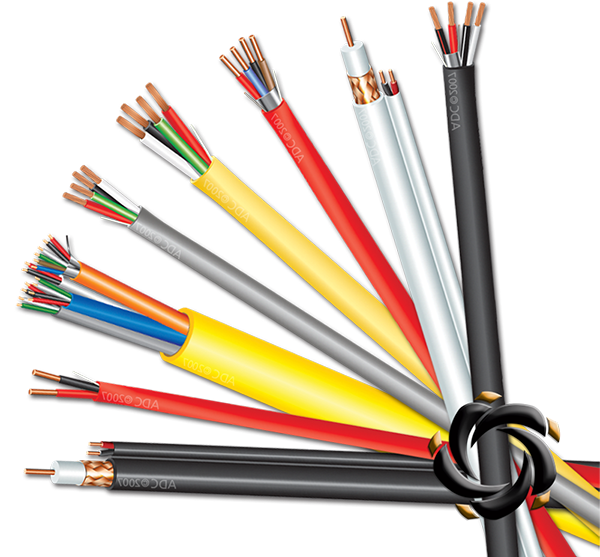1. Selecting the Correct Connector
Connector selection is the first and one of the most critical aspects of terminating 75 Ohm Coaxial Cable. The connector must be designed for 75 Ohm impedance to maintain signal integrity across the transmission path. Common connectors used for 75 Ohm Coaxial Cable include F-type connectors, which are widely used for satellite television and broadband applications; BNC connectors, typically applied in professional video and CCTV systems; and RCA connectors, often used in consumer audio-video setups. The choice of connector also depends on the type of cable being used, such as RG-6 or RG-59. RG-6, for example, is thicker with better shielding, making it suitable for longer runs or higher-frequency applications, while RG-59 is often used for shorter runs where flexibility is important. Selecting a connector that precisely matches both the cable type and the system frequency range ensures that the cable maintains its 75 Ohm characteristic impedance, minimizing reflection and signal loss.
2. Preparing the Cable
Proper cable preparation is vital to ensure that the termination is reliable and maintains signal integrity. The preparation process begins with stripping the outer jacket to expose the shielding layer, followed by careful trimming of the foil and braid to avoid damaging the conductor. Users must pay close attention to measuring precise stripping lengths, as improper stripping can cause the inner conductor to be too short or the shielding to touch the center conductor, leading to a short circuit or reflection. The inner conductor must remain straight and free from nicks or bends, as even minor deformities can increase resistance and negatively affect signal quality. The exposed shielding must also be neatly folded back over the cable jacket to provide proper grounding when the connector is attached. This step not only ensures a secure mechanical fit but also prevents signal leakage or interference.
3. Connector Attachment and Crimping
Once the cable is properly prepared, the connector must be carefully attached. Crimping is a common method used to mechanically secure the connector to the cable while maintaining electrical continuity. Using the correct crimping tool and size is essential; a crimp that is too loose can cause intermittent connections, while a crimp that is too tight may deform the cable or connector, causing permanent damage. Compression-style connectors are another option, particularly in high-frequency applications, as they provide uniform pressure around the cable and minimize the risk of loose contacts. When attaching the connector, users should ensure that the inner conductor extends slightly beyond the connector tip without protruding excessively, as this allows proper contact with the mating connector while avoiding short circuits. The shielding and braid must also be properly seated within the connector body to ensure effective grounding and maintain the cable’s shielding effectiveness.
4. Inspecting the Termination
After the connector has been attached and crimped, it is critical to inspect the termination both visually and electrically. Visually, the inner conductor should be centered and straight, with no stray strands from the shielding touching the conductor. The dielectric insulator should remain intact and properly positioned, and the connector body should sit flush against the cable jacket. Electrical testing, such as using a cable tester or Time Domain Reflectometer (TDR), can verify continuity, impedance, and return loss. These tests help detect subtle issues like micro-bends, improper crimping, or small gaps that could cause signal reflection. Ensuring proper termination at this stage is crucial, as even minor defects can degrade high-frequency signal transmission, particularly in satellite or broadband systems where signal quality is highly sensitive to impedance variations.
5. Ensuring Environmental Protection
For installations exposed to moisture, temperature extremes, or outdoor conditions, users should take additional steps to protect terminated connections. Weatherproof boots, heat-shrink tubing, and sealants can prevent corrosion and water ingress, which are common causes of signal degradation over time. Moisture penetration can oxidize both the inner conductor and the shielding, leading to increased resistance, signal loss, and intermittent connectivity. Properly protecting the termination not only extends the life of the cable assembly but also ensures consistent performance under challenging environmental conditions.
6. Best Practices for Long-Term Reliability
Maintaining high performance over time requires consistent adherence to best practices. Users should standardize stripping lengths and connector orientation across all terminations in a system to maintain uniform quality. Avoiding sharp bends near terminations prevents mechanical stress on the cable and connector interface. Selecting high-quality connectors rated for the system’s frequency range ensures low return loss and minimal signal degradation. Documenting termination procedures is recommended for large-scale installations, allowing future maintenance or troubleshooting to be performed efficiently and reliably.
















